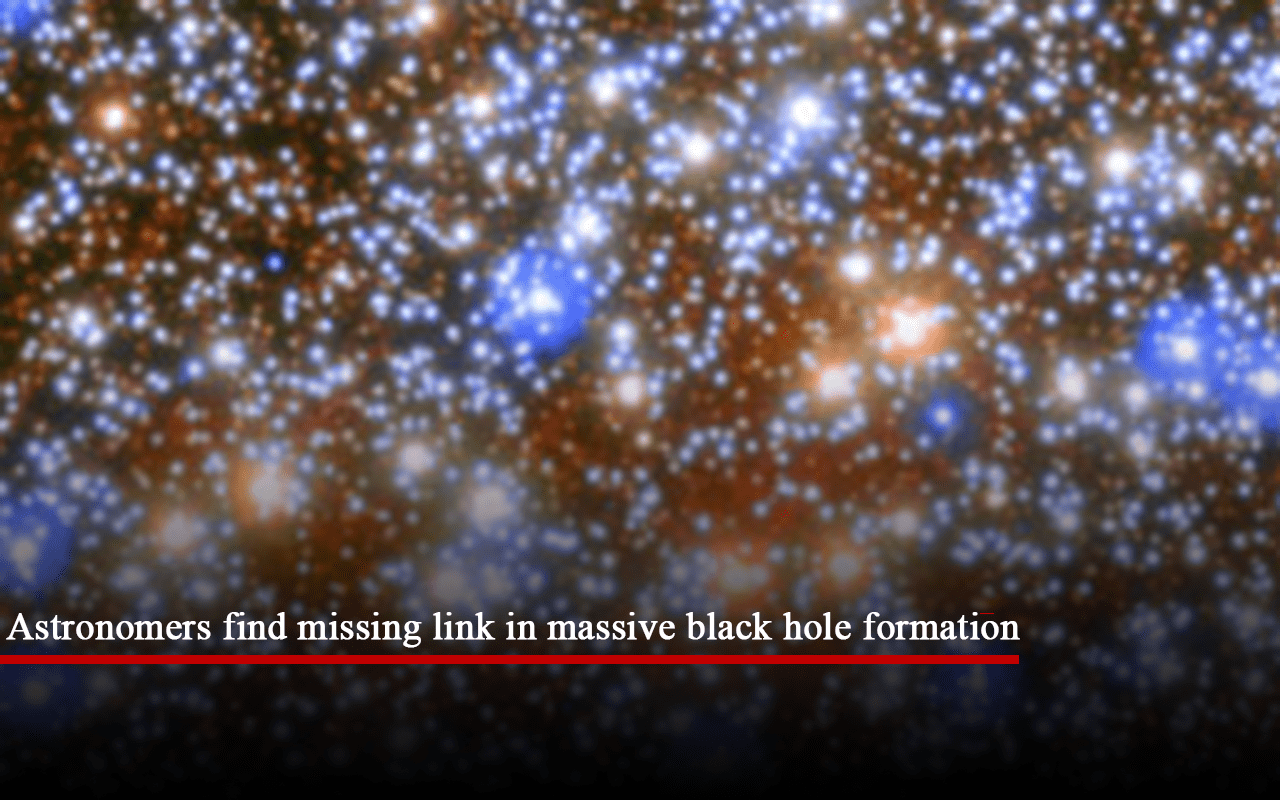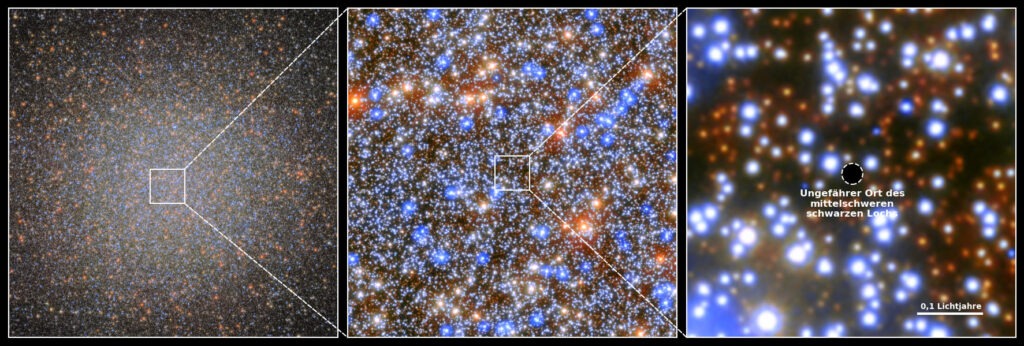
This article originally appeared on @THEU
Omega Centauri is a spectacular collection of 10 million stars, visible as a smudge in the night sky from Southern latitudes. Through a small telescope, it looks no different from other so-called globular clusters; a spherical stellar collection so dense towards the center that it becomes impossible to distinguish individual stars. But a new study, led by researchers from the University of Utah and the Max Planck Institute for Astronomy, confirms what astronomers had argued about for over a decade: Omega Centauri contains a central black hole. The black hole appears to be the missing link between its stellar and supermassive kin—stuck in an intermediate stage of evolution, it is considerably less massive than typical black holes in the centers of galaxies. Omega Centauri seems to be the core of a small, separate galaxy whose evolution was cut short when it was swallowed by the Milky Way.
“This is a once-in-a-career kind of finding. I’ve been excited about it for nine straight months. Every time I think about it, I have a hard time sleeping,” said Anil Seth, associate professor of astronomy at the U and co-principal investigator (PI) of the study. “I think that extraordinary claims require extraordinary evidence. This is really, truly extraordinary evidence.”
A clear detection of this black hole had eluded astronomers until now. The overall motions of the stars in the cluster showed that there was likely some unseen mass near its center, but it was unclear if this was an intermediate-mass black hole or just a collection of the stellar black holes. Maybe there was no central black hole at all.

“Previous studies had prompted critical questions of ‘So where are the high-speed stars?’ We now have an answer to that, and the confirmation that Omega Centauri contains an intermediate-mass black hole. At about 18,000 light-years, this is the closest known example for a massive black hole,” said Nadine Neumayer, a group leader at the Max Planck Institute and PI of the study. For comparison, the supermassive black hole in the center of the Milky Way is about 27,000 light-years away.
The paper was published in the journal Nature on July 10, 2024. Watch the research come to life on August 8, 2024 at 7:00 p.m. when Anil Seth will present these once-in-a-lifetime findings at the Clarke Planetarium IMAX theater.
Read more about this article on @THEU by Lisa Potter
